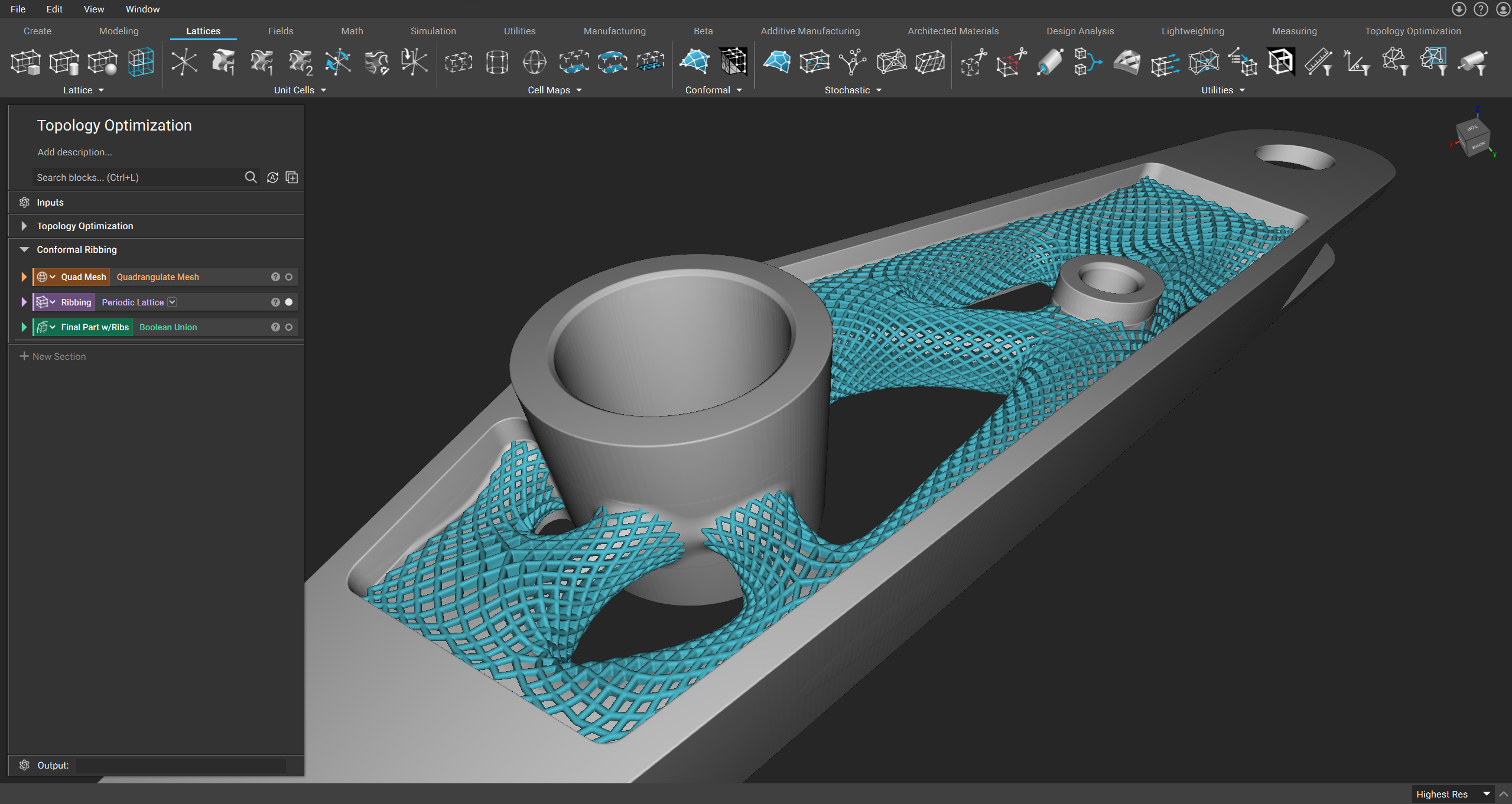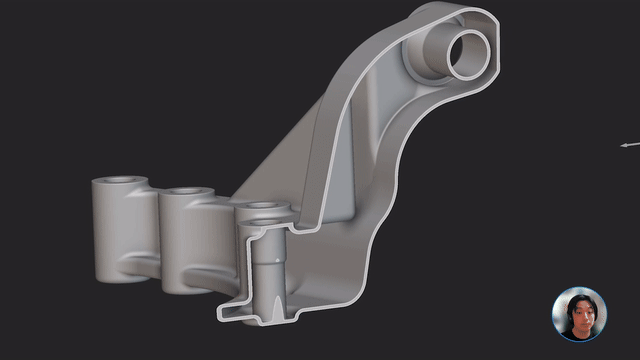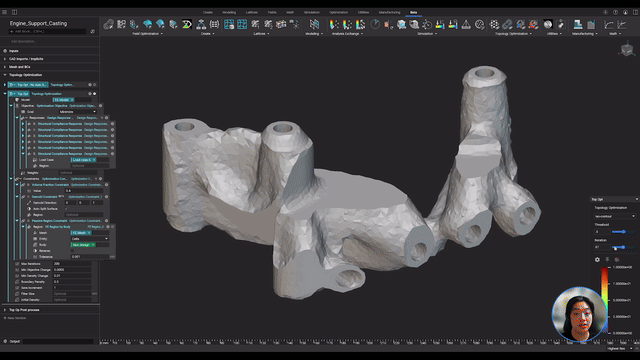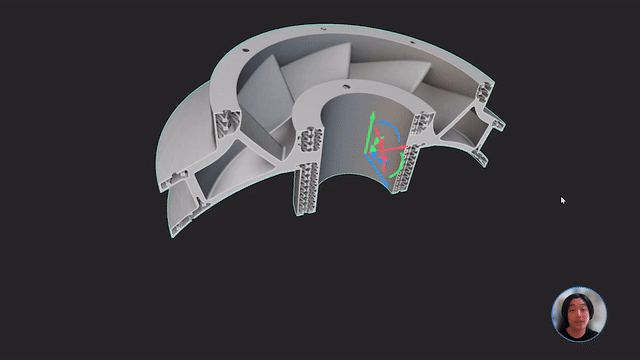Transforming industrial hardware supply chains with additive manufacturing

Written by nTop
Published on July 12, 2023
Applications
- General
- Lightweighting
Key Software Capabilities
- Design automation
- Lattice structures
- Topology optimization
Learn how additive manufacturing is transforming supply chain management in industrial hardware and how you can leverage this technology to create better supply chains.
At a time when 72% of industrial manufacturers believe that ongoing shortages and supply chain disruptions present the biggest uncertainty for their industry, many firms are rapidly turning to digital technology to adapt.
In navigating the challenges presented by supply chain issues — as well as those brought on by economic instability and decarbonization programs — many companies are realizing that additive manufacturing (AM) is an increasingly viable solution for developing the next generation of industrial hardware products.
With its ability to create parts with complex geometry and improved performance, as well as accelerate product development, AM offers a powerful solution for tackling challenges in the industry. This article will explore the benefits of using AM in industrial hardware to produce more flexible, efficient, and robust supply chains.
Additive manufacturing and supply chain restructuring

The Wärtsilä team used nTop to redesign their turbomachinery components and reduce spare part lead time.
The potential for additive manufacturing to impact supply chain processes cannot be overstated. AM presents many opportunities in the manufacturing supply chain by replacing traditional technologies with new ones that help organizations localize their production and eliminate weak links. This is because AM offers a more flexible and efficient way to produce components, particularly for those with complex designs and low production volumes that often create bottlenecks in supply chain processes across the globe.
Unfortunately, the supply chain resilience associated with AM can come at a cost. Because legacy technology typically follows different design guidelines than those used in AM, legacy components and systems often need to be redesigned for AM before they can have an impact. A lack of design for additive manufacturing (DfAM) expertise is another major barrier to success. DfAM is the process of designing, optimizing, or changing the form and function of a part, assembly, or product to maximize the benefits of AM. Despite the growing popularity of AM technologies, many design engineers still lack a good understanding of best DfAM practices.
Fortunately, this challenge can be solved with access to design software that lets you build, package, share, and automate DfAM procedures, reducing your dependency on experts while making the most of additive manufacturing.
Opportunities for restructuring supply chains with AM
Although there are some challenges associated with AM, the opportunities and benefits are significant, particularly with regard to supply chain restructuring. Some of the most notable opportunities of AM for supply chain restructuring include:
Lightweighting

Structural bracket lightweighted using topology optimization and surface ribs.
Lightweighting is the process of reducing the weight of a part, assembly, or system to make it as light as possible while still working within existing design constraints.
Lightweighting can play an important role in supply chain considerations. That’s because, when assessing the viability of replacing a traditional overseas supply network with regional additive sourcing, cost is always part of the equation. Since materials play a significant role in the total cost calculation for AM, lightweighting becomes an important consideration to minimize manufacturing costs. Luckily, the design freedom associated with AM can significantly increase opportunities for lightweighting, reducing material costs while simultaneously increasing the performance of the component. Improved performance is another major benefit of lightweighting that helps justify any additional costs the process may present.
Functional integration

Multiple components consolidated into a single part
You can avoid the need for an additional step in the 3D-printing supply chain through functional integration, a process that combines multiple functional elements into a single part, simplifying assembly, lowering the potential points of failure, and lowering manual labor costs. Functional integration can take multiple forms, including embedded systems such as cooling channels, compliance mechanisms, or surface textures.
Architected materials
Architected materials offer a wide variety of applications that can make the supply chain safer and more effective. Architected materials are highly-engineered structures that have been tailored to meet specific mechanical, thermal, electromagnetic, or biological performance characteristics. Their applications vary widely, ranging from adjustable foam-like structures to sustainable alternatives to hazardous materials that can reduce risk in the supply chain.
Case study
To better understand additive manufacturing’s impact on supply chain restructuring, it’s helpful to consider an example of how companies use AM to improve supply chains.
Wärtsilä: Lightweighting system-critical spare parts

Centrifugal pump impeller designed by Wärtsilä.
Wärtsilä, a Finnish technology company, provides smart technologies and lifecycle solutions for the marine and energy markets. One of their biggest challenges was maintaining a global manufacturing supply chain of spare parts to support the efficient operation of their installed base of engines.
To address this challenge, Wärtsilä leveraged AM and created a reusable design workflow to lightweight their turbomachinery components. This allowed them to cut the weight of system-critical parts in half while maintaining their external shape. Once the workflow was created and applied to one part, Wärtsilä was able to apply it to optimize similar components for AM with no additional design work.
In this case, AM benefited Wärtsilä’s supply chain by reducing lead times for spare parts from months to days, providing increased uptime and operational efficiency for its customers. This approach also reduced the company's carbon footprint and overall 3D printing and supply chain management costs.
Design software for additive manufacturing

nTop’s next-generation design software in action.
nTop is next-generation design software that allows industrial technology engineers to fully utilize the design freedom of AM and thereby optimize their manufacturing supply chain.
nTop offers a range of capabilities that streamline the design process and reduce reliance on experts, giving you the freedom to discover the benefits of AM for yourself. These benefits include gaining a more flexible and efficient way to produce components and accessing new opportunities to optimize the manufacturing supply chain, including lightweighting, functional integration, and architected materials. To learn more about nTop, check out our comprehensive Industrial Technology guide.

nTop
nTop (formerly nTopology) was founded in 2015 with the belief that engineers’ ability to innovate shouldn’t be limited by their design software. Built on proprietary technologies that upend the constraints of traditional CAD software while integrating seamlessly into existing processes, nTop allows designers in every industry to create complex geometries, optimize instantaneously, and automate workflows to develop breakthrough 3D-printed parts in record time.
Related content
- CASE STUDY
How blueflite reduced fuselage mass 25% in 4 hours instead of 4 weeks

- PRODUCT UPDATE
nTop 5 is here: Expanding the implicit ecosystem, boosting performance and precision

- VIDEO
Five ways to lightweight in nTop in less than 5 minutes

- VIDEO
Topology Optimization Design for Cast and Injection-Molded Parts

- VIDEO
Lightweighting an impeller for additive manufacturing
